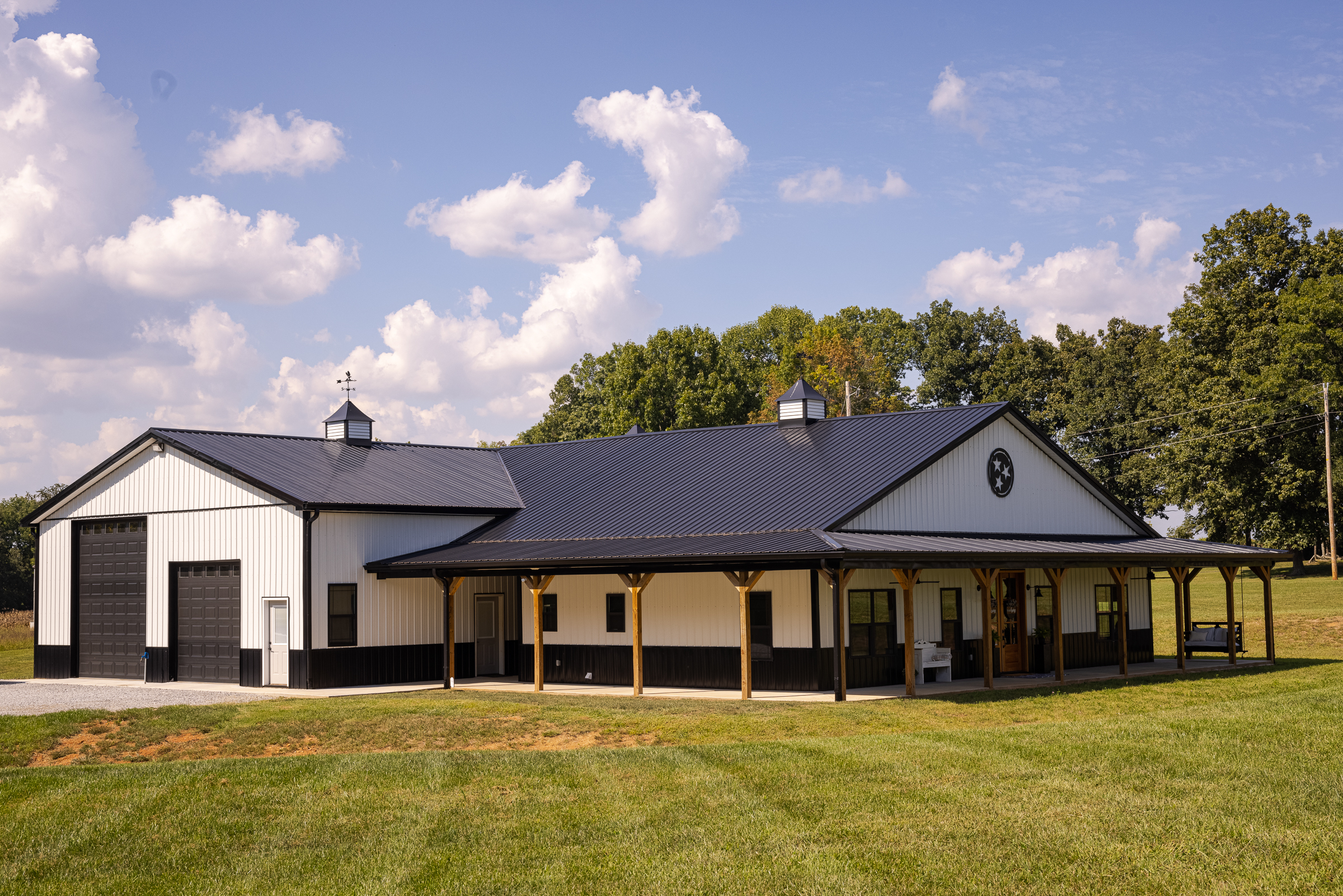Barndominiums Vs. Standard Homes: a Detailed Comparison of Way Of Life and Performance
The decision in between barndominiums and conventional homes includes numerous aspects, including way of life preferences and functional requirements. Barndominiums are characterized by their open formats and flexibility, typically appealing to those who prioritize common living and flexibility.
Review of Barndominiums
Barndominiums, an unique real estate fad acquiring popularity across numerous areas, mix the rustic charm of barn-style style with the capability of contemporary space. These special frameworks typically include a steel or wood structure, integrating open layout and high ceilings with energy-efficient attributes. Frequently located on expansive rural residential or commercial properties, barndominiums offer homeowners the possibility to enjoy a tranquil lifestyle while providing adequate space for different activities.
The convenience of barndominiums prolongs beyond their aesthetic appeal; they can work as both living quarters and practical spaces for pastimes, workshops, or perhaps small companies. Their adaptive layout enables for easy customization, suiting varied household needs and preferences. Many owners appreciate the reduced maintenance requirements associated with steel home siding and roof, adding to long-term sturdiness.

Qualities of Conventional Houses
Highlighting classic design and comfort, conventional homes are characterized by their distinctive building styles, which frequently reflect historic influences and regional looks. Typical attributes consist of symmetrical exteriors, gabled roofs, and a focus on craftsmanship, causing a warm and inviting atmosphere.
Standard homes commonly incorporate components such as crown molding, wainscoting, and hardwood flooring, enhancing their classic allure. They typically include several spaces with specified functions, promoting family members communication while enabling for personal privacy. click here to view. The format often includes official living and eating locations, which contribute to amusing visitors and hosting family events
Outside materials such as block, wood, or stone are often made use of, adding to toughness and a sense of durability. Barndominium builder. Additionally, numerous typical homes are designed with front decks or stoops, cultivating a sense of neighborhood and link with the community
Landscape design plays a substantial duty in traditional home layout, with properly maintained gardens and paths that improve curb charm - website. In general, typical homes symbolize a sense of fond memories and stability, appealing to those who value heritage and a much more organized living environment
Price Comparison
Typically, a cost comparison between barndominiums and typical homes discloses substantial differences in building and construction costs and overall investment. Barndominiums, often constructed from steel or steel structures, usually incur lower material and labor prices than typical homes constructed from timber and block. The simplified layout of barndominiums can convert to lowered building times, better reducing labor expenses and accelerating occupancy.
Generally, the expense per square foot for a barndominium varies from $100 to $150, while conventional homes can differ widely, commonly falling between $150 and $300 per square foot, depending on place, materials, and design intricacy. This expense variation makes barndominiums an eye-catching option for budget-conscious buyers looking for larger living rooms without compromising quality.
Furthermore, barndominiums might result in long-term savings via lower maintenance costs, energy performance, and insurance coverage rates. Their resilient building products often require less maintenance in time contrasted to typical homes. It is necessary to think about that while first costs might be lower for barndominiums, the final investment will certainly also depend on private modification and preferred facilities, which can affect the total cost in both real estate kinds.
Way Of Life and Space Factors To Consider
When thinking about way of living and area, barndominiums provide an unique versatility that interest a selection of property owners. These hybrid frameworks integrate property coping with useful space, frequently including open layout that can be adapted to suit private demands. This adaptability is specifically useful for households or people looking for a personalized living environment, enabling diverse usages such as home offices, workshops, or leisure areas.
:max_bytes(150000):strip_icc()/ConvertedBarn-Barndominium-e4e7f75eaca64a9eb5674917da3b20d6.jpg)
In addition, the aesthetic appeal of barndominiums can deal with both rustic and modern preferences, making them a functional option for various style preferences (Barndominium repair). Ultimately, the selection in between a barndominium and a conventional home typically hinges on exactly how well each alternative straightens with the home owner's way of life aspirations and spatial requirements, highlighting the relevance of considering personal priorities in the decision-making process
Ecological Effect and Sustainability
The environmental effect and sustainability of barndominiums present compelling benefits compared to typical homes. Mainly constructed from steel and other sturdy materials, barndominiums are commonly constructed making use of recycled sources, lowering the demand for new products and decreasing waste. Their style generally emphasizes open spaces, which can bring about reduced energy usage for home heating and air conditioning compared to typical homes with even more segmented layouts.
Moreover, barndominiums can include sustainable functions such as solar panels, rain harvesting systems, and progressed insulation strategies, enhancing their energy performance. The adaptability of their layout permits homeowners to incorporate these innovations much more seamlessly than in numerous typical homes, which may require comprehensive retrofitting.
Additionally, barndominiums often require less resources for building and construction due to their less complex, extra effective designs. This not only lowers the carbon impact related to building but also contributes to a much more lasting way of living. In comparison, standard homes might visit this site include greater levels of energy expenditure and resource utilize throughout their lifecycle, from building to maintenance. On the whole, barndominiums stand for a forward-thinking approach to sustainable living, lining up with contemporary environmental concerns.
Conclusion
In recap, the option between barndominiums and typical homes depends upon private way of life preferences and useful needs. Barndominiums, with their open formats and lasting materials, cater to those seeking flexibility and common living. On the other hand, traditional homes offer defined areas that improve privacy and copyright historical aesthetic appeals. Each alternative provides one-of-a-kind advantages, necessitating cautious consideration of one's worths and needs when figuring out the most ideal living atmosphere.